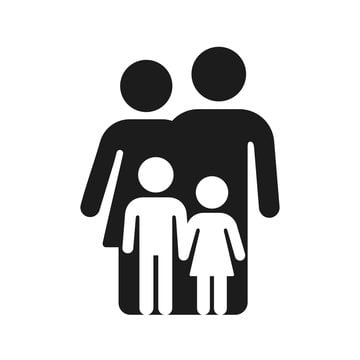Mastering the Silent Language: A Comprehensive Guide to Nonverbal Communication
Effective communication transcends words; it encompasses the unspoken nuances of nonverbal cues. This guide delves into the fascinating world of nonverbal communication, exploring its various facets and providing practical strategies to enhance your interpersonal skills and build stronger connections.
Nonverbal communication, the silent language we all speak, often conveys more meaning than our words. From subtle facial expressions to the distance we maintain from others, every gesture, posture, and tone contributes to the overall message we transmit. Understanding and mastering these nonverbal cues is crucial for successful communication in both personal and professional settings.
Decoding the Signals: Key Elements of Nonverbal Communication
Let's examine the key components of this silent language, exploring how each contributes to the overall message:
1. Facial Expressions: The Mirror of Emotions
Our faces are incredibly expressive, revealing a wide spectrum of emotions – joy, sadness, anger, surprise, and many more subtle variations. Consciously observing your own facial expressions and understanding their impact on others is a vital first step. Are you conveying the emotion you intend? Practice mindful expression to ensure alignment between your feelings and outward presentation.
2. Body Language: Posture and Presence
Body language speaks volumes. A confident posture projects assurance and authority, while a slumped stance might suggest discouragement or lack of confidence. Be aware of your body language and strive for postures that reflect the message you want to convey. Maintain an open, inviting stance, using gestures purposefully to emphasize your points.
3. Gestures: The Art of Expressive Movement
Hand gestures, nods, and shrugs add layers of meaning and emphasis to your communication. A simple point clarifies direction; a nod signals agreement. Mastering the art of effective gesturing enhances clarity and engagement, ensuring your message resonates with your audience. Avoid distracting or excessive movements; keep your gestures purposeful and aligned with your verbal message.
4. Eye Contact: The Window to the Soul
Eye contact is a powerful tool for establishing connection and trust. Maintaining appropriate eye contact demonstrates attentiveness and sincerity, while avoiding it may be perceived as disinterest or dishonesty. Practice making comfortable eye contact, mindful of cultural norms, to build rapport and enhance your communication effectiveness.
5. Proximity: Navigating Personal Space
The physical distance we maintain from others significantly impacts the interaction. Invasive proximity can create discomfort, while excessive distance can hinder connection. Understanding and respecting personal space is crucial, adapting your proximity based on the social context and your relationship with the other person.
6. Touch: A Powerful, Yet Delicate Tool
Touch can convey a vast range of emotions, from warmth and empathy to aggression and hostility. A supportive pat on the back differs greatly from an aggressive shove. Be mindful of the power of touch, respecting personal boundaries and using touch appropriately to strengthen connections or offer comfort, never causing offense.
7. Tone of Voice: The Melody of Meaning
The tone in which we speak significantly alters the meaning of our words. A sarcastic tone can undermine even a positive message, while a gentle tone can soften a correction. Cultivate a varied vocal tone that aligns with your message, ensuring your words carry the intended emotion and impact.
8. Silence: The Power of Pause
Strategic silence is a potent communication tool. A thoughtful pause before responding shows consideration and reflection, whereas an uncomfortable silence can create tension. Learn to utilize silence effectively, allowing for moments of reflection and emphasizing the weight of your words.
9. Microexpressions: Fleeting Clues to Hidden Emotions
Microexpressions – brief, involuntary facial expressions – can reveal underlying emotions, even when consciously masked. Observing these fleeting expressions requires keen attention but provides valuable insight into a person's true feelings.
10. Cultural Nuances: Navigating Global Differences
Nonverbal cues are culturally specific; a gesture considered positive in one culture may be offensive in another. Understanding and respecting cultural differences is paramount for effective cross-cultural communication. Educate yourself on diverse nonverbal communication styles to avoid misunderstandings and promote inclusivity.
11. Mirroring: Building Rapport Through Reflection
Subtly mirroring another person's body language and gestures can create a sense of connection and rapport. This mirroring, done naturally and subtly, signals engagement and understanding, fostering a more harmonious interaction.
12. Context is King: Understanding the Situation
Always interpret nonverbal cues within their context. A smile at a social gathering conveys joy, whereas the same smile at a funeral would be deeply inappropriate. Context is essential for accurate interpretation and avoiding miscommunication.
13. Congruence: Aligning Words and Actions
For effective communication, verbal and nonverbal cues must align. Incongruence – such as saying "I'm fine" while visibly upset – creates confusion and undermines trust. Strive for congruence to ensure your messages are clear and consistent.
14. Sharpening Your Observational Skills: Practice Makes Perfect
Mastering nonverbal communication requires consistent practice and keen observation. Pay close attention to subtle cues, practicing your ability to interpret and respond appropriately. The more you observe, the more adept you'll become at deciphering the silent language.
15. Continuous Improvement: The Journey of Learning
Like any skill, mastering nonverbal communication takes consistent effort. Experiment with different techniques, seek feedback, and embrace opportunities for learning and growth. The more you practice, the more naturally and effectively you'll communicate nonverbally.
By understanding and effectively employing these aspects of nonverbal communication, you can significantly enhance your interactions, build stronger relationships, and achieve greater success in all areas of your life. Embrace the silent language and unlock its power to communicate effectively and connect meaningfully with others.





